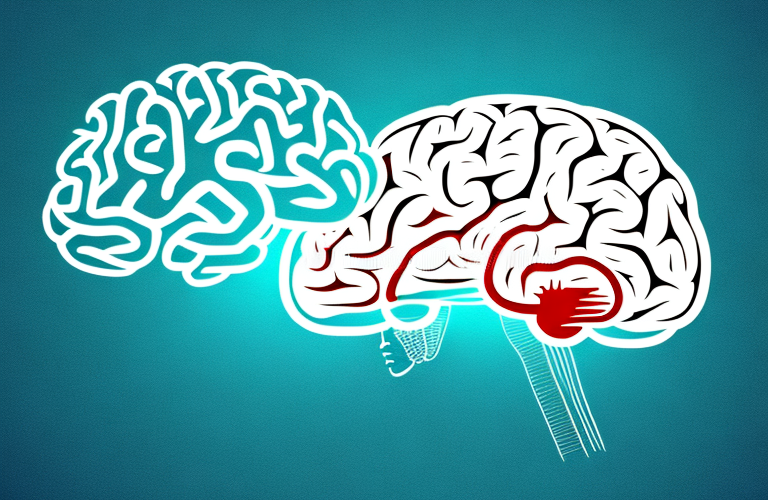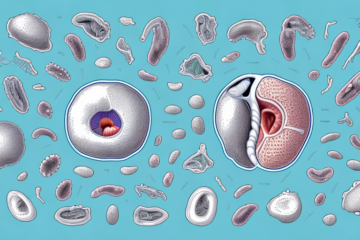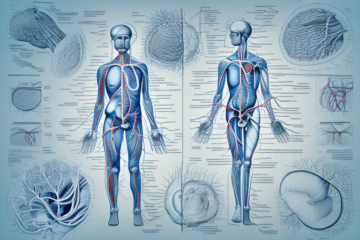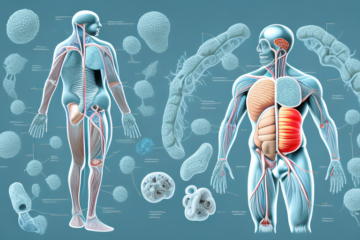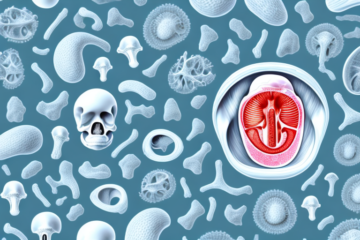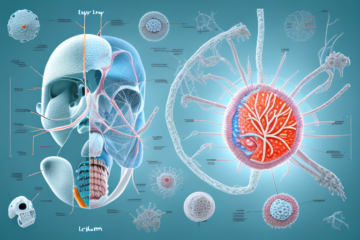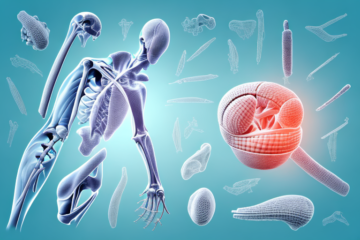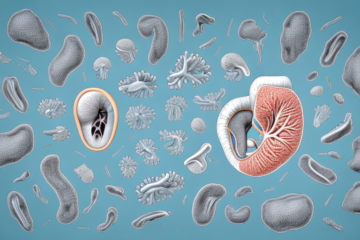The brain is the most complex and fascinating organ in the human body. It is the central command center that controls all bodily functions, including movement, sensation, and cognition. This article will take you on a journey through the intricate anatomy and function of the brain, exploring its different parts and their functions, how the brain processes information, and more. By the end of this article, you will have a comprehensive understanding of this miraculous organ and how it works.
Understanding the Brain: Structure and Function
The brain is divided into several parts, each with its unique structure and functions. The most prominent part of the brain is the cerebrum, which is responsible for conscious thought, movement, sensation, and voluntary action. It is divided into two hemispheres, the left and right, with each hemisphere controlling opposite sides of the body. The cerebellum, located at the back of the brain, is responsible for coordination, balance, and fine motor control. The brainstem, located at the base of the brain, connects the brain to the spinal cord and regulates essential functions such as heart rate, breathing, and digestion.
Another important part of the brain is the limbic system, which is responsible for emotions, motivation, and memory. It includes structures such as the amygdala, hippocampus, and hypothalamus. The amygdala plays a crucial role in processing emotions, while the hippocampus is involved in forming and retrieving memories. The hypothalamus regulates various bodily functions such as hunger, thirst, and body temperature.
Recent studies have also shown that the brain has a remarkable ability to change and adapt, known as neuroplasticity. This means that the brain can reorganize itself in response to new experiences, learning, and injury. Neuroplasticity is essential for recovery after brain damage and for learning new skills. It also explains why certain activities, such as playing a musical instrument or learning a new language, can have a positive impact on brain function and cognitive abilities.
The Different Parts of the Brain and Their Functions
The cerebral cortex is the outer layer of the cerebrum, which is responsible for higher mental processes such as perception, language, and reasoning. The frontal lobe, located in the front of the brain, is responsible for decision making, planning, and problem-solving. The parietal lobe, located at the top of the brain, processes sensory information such as touch, pressure, temperature, and pain. The occipital lobe, located at the back of the brain, processes visual information. The temporal lobe, located on the sides of the brain, processes auditory information and memory.
The brainstem is located at the base of the brain and is responsible for regulating basic life functions such as breathing, heart rate, and blood pressure. It also serves as a pathway for information to travel between the brain and the rest of the body. The cerebellum, located at the back of the brain, is responsible for coordinating movement and balance.
Damage to any of these parts of the brain can result in a variety of neurological disorders and conditions. For example, damage to the frontal lobe can result in difficulty with decision making and impulse control, while damage to the cerebellum can result in problems with coordination and balance. Understanding the different parts of the brain and their functions is crucial for diagnosing and treating these conditions.
How the Brain Processes Information
The brain processes information through electrical and chemical signals sent between neurons, the cells that make up the brain. When a neuron receives a signal, it sends an electrical charge down its axon to the synapse, the gap between neurons. The electrical charge triggers the release of neurotransmitters, chemical messengers that carry the signal across the synapse to the next neuron. This process continues until the signal reaches its destination in the brain.
However, the brain’s processing of information is not always a linear process. The brain has the ability to process information in parallel, meaning it can process multiple pieces of information at the same time. This is due to the brain’s complex network of neurons and their ability to communicate with each other through various pathways. Additionally, the brain can also prioritize certain information over others, allowing it to focus on important tasks or stimuli while filtering out distractions.
The Role of Neurons in Brain Functioning
Neurons are the building blocks of the brain and are responsible for processing information. They are specialized cells that have a unique shape and function. Neurons communicate with each other through synapses, which allow for the transmission of electrical and chemical signals.
Neurons are not evenly distributed throughout the brain. Different regions of the brain contain different types of neurons that are specialized for specific functions. For example, the neurons in the visual cortex are responsible for processing visual information, while the neurons in the motor cortex are responsible for controlling movement.
Neurons are also capable of changing and adapting in response to experiences. This process is known as neuroplasticity and is essential for learning and memory. Neuroplasticity allows the brain to reorganize itself in response to new information and experiences, which is why learning a new skill or language can physically change the structure of the brain.
The Importance of Neurotransmitters in Brain Communication
Neurotransmitters are chemical messengers that transmit signals between neurons. They play a crucial role in brain function, influencing many processes, including mood, appetite, memory, and cognition. Imbalances in neurotransmitters can lead to various mental and neurological disorders, such as depression, anxiety, and Parkinson’s disease.
There are several types of neurotransmitters, including dopamine, serotonin, and acetylcholine. Each type has a specific function and affects different areas of the brain. For example, dopamine is associated with pleasure and reward, while serotonin is linked to mood regulation and sleep.
Research has shown that lifestyle factors, such as diet and exercise, can affect neurotransmitter levels. For instance, consuming foods rich in tryptophan, an amino acid that is a precursor to serotonin, can increase serotonin levels and improve mood. Similarly, regular exercise has been found to increase dopamine levels, leading to feelings of happiness and well-being.
How the Brain Controls Our Emotions and Behavior
The limbic system, located deep within the brain, is responsible for regulating emotions, motivation, and memory. It includes several structures, such as the amygdala and hippocampus, which are involved in emotion regulation and memory formation. The prefrontal cortex, located in the frontal lobe, plays a crucial role in decision making, planning, and social behavior.
Recent studies have shown that the brain’s reward system, which is responsible for feelings of pleasure and motivation, is closely linked to addiction. When we engage in activities that activate the reward system, such as eating or using drugs, our brain releases dopamine, a neurotransmitter that creates feelings of pleasure. Over time, the brain can become dependent on these activities to release dopamine, leading to addiction.
Additionally, research has shown that chronic stress can have a negative impact on the brain’s structure and function. Prolonged exposure to stress hormones, such as cortisol, can damage the hippocampus, leading to memory problems and difficulty regulating emotions. It can also lead to changes in the prefrontal cortex, making it harder to make decisions and control impulses.
The Complexities of Memory Formation and Retrieval in the Brain
The process of memory formation and retrieval is complex and involves several brain regions. The hippocampus is crucial for the formation of new memories, while older memories are stored in the cortex. The process of retrieving memories involves activating the same neural pathways that were involved in the initial formation of the memory.
Recent research has also shown that emotions play a significant role in memory formation and retrieval. When we experience strong emotions, such as fear or joy, the amygdala, a small almond-shaped structure in the brain, becomes activated and enhances the encoding and retrieval of memories associated with that emotion. This is why we often remember emotional events more vividly than neutral ones.
The Connection Between the Brain and Physical Movement
The brain is responsible for controlling movement through a network of neurons and pathways. When we decide to move, the prefrontal cortex sends signals to the motor cortex, which activates the appropriate muscles to produce the desired movement. The cerebellum and basal ganglia play an essential role in coordinating movement and maintaining balance.
Research has shown that physical activity can have a positive impact on brain function. Exercise increases blood flow to the brain, which can improve cognitive function and memory. Additionally, regular physical activity has been linked to a reduced risk of developing neurological disorders such as Alzheimer’s disease and Parkinson’s disease. It is important to maintain an active lifestyle to promote both physical and mental health.
Neuroplasticity: Understanding the Brain’s Ability to Change and Adapt
Neuroplasticity refers to the brain’s ability to change and adapt in response to experience. It is the foundation of learning and memory, and it plays a crucial role in recovery from brain damage and neurological disorders. Neuroplasticity occurs through the formation of new neural connections and the rewiring of existing ones.
Recent research has shown that neuroplasticity is not limited to the early stages of life, but can occur throughout adulthood. This means that the brain has the ability to adapt and change in response to new experiences and challenges, even in old age. This has important implications for the treatment of age-related cognitive decline and neurodegenerative diseases such as Alzheimer’s.
Neuroplasticity can also be enhanced through certain activities and practices, such as meditation, exercise, and learning new skills. These activities have been shown to increase the growth of new neural connections and improve cognitive function. Understanding the mechanisms of neuroplasticity and how to enhance it can have significant benefits for individuals looking to improve their cognitive abilities and overall brain health.
Common Disorders and Diseases that Affect the Brain
There are several disorders and diseases that can affect the brain, ranging from mild to severe. Common disorders include Alzheimer’s disease, Parkinson’s disease, epilepsy, and stroke. Symptoms can vary depending on the condition, but they often involve cognitive and behavioral changes, including memory loss, tremors, seizures, and difficulty with movement or language.
Another common disorder that affects the brain is multiple sclerosis (MS). MS is a chronic autoimmune disease that affects the central nervous system, including the brain and spinal cord. Symptoms can vary widely, but often include fatigue, muscle weakness, difficulty with coordination and balance, and problems with vision. While there is no cure for MS, there are treatments available that can help manage symptoms and slow the progression of the disease.
Techniques for Maintaining a Healthy Brain throughout Life
Maintaining a healthy brain throughout life is essential for optimal brain function and quality of life. Techniques for keeping your brain healthy include staying physically active, eating a healthy diet rich in antioxidants and omega-3 fatty acids, getting enough sleep, managing stress, and engaging in mental stimulation, such as puzzles and learning new skills.
In conclusion, the brain is a remarkable organ that is responsible for all bodily functions, including movement, sensation, and cognition. Understanding the structure and function of the brain is essential for maintaining a healthy brain and preventing neurological disorders. By implementing techniques for keeping your brain healthy and actively engaging in mental stimulation, you can ensure your brain remains functioning at its optimal level throughout your life.
Another important technique for maintaining a healthy brain is socializing. Studies have shown that social interaction can help improve cognitive function and reduce the risk of developing dementia. This can include spending time with friends and family, joining social clubs or groups, or volunteering in the community.
Additionally, it is important to protect your brain from injury. Wearing helmets during sports or activities that pose a risk of head injury, such as biking or skiing, can help prevent traumatic brain injury. It is also important to take steps to prevent falls, such as removing tripping hazards in your home and wearing appropriate footwear.

